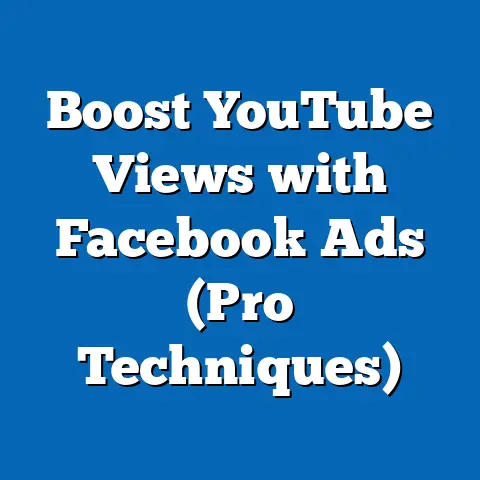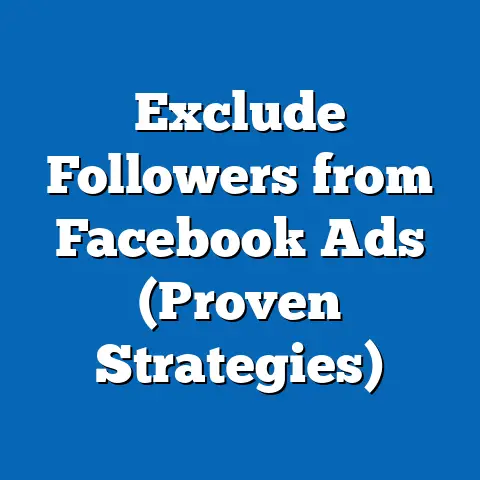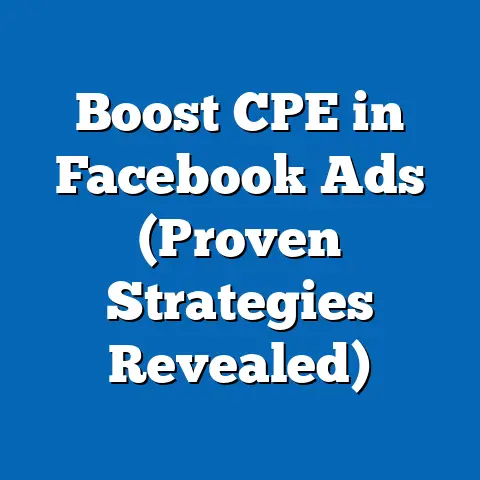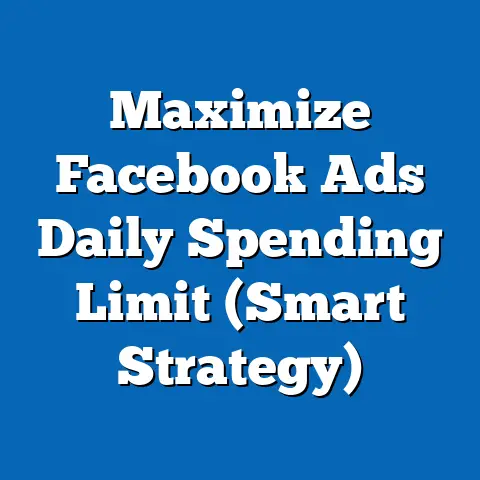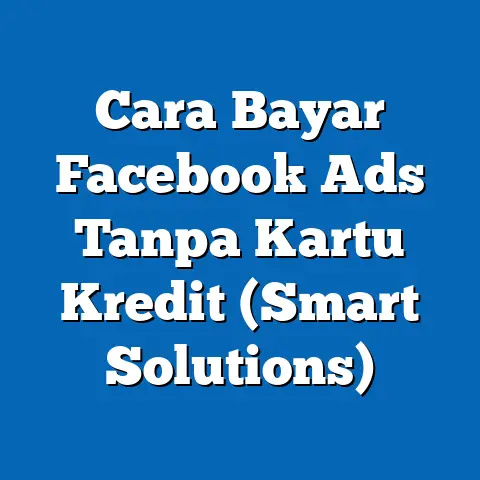Craft Irresistible Ads (Proven Facebook Ad Techniques)
Crafting Irresistible Ads: Proven Facebook Ad Techniques and the Transformation of Digital Political Advertising
In the rapidly evolving landscape of political campaigning, digital advertising, particularly on platforms like Facebook, has undergone a profound transformation over the past decade. This shift is not merely technological but deeply tied to the changing demographics of users, their core beliefs, and their political engagement patterns. Understanding this transformation requires a detailed examination of the groups crafting and consuming these ads, their distinguishing characteristics compared to other political advertising cohorts, and the proven techniques that make Facebook ads irresistible in political contexts.
The Transformation of Political Advertising on Facebook: A Demographic Overview
The advent of social media as a political tool has fundamentally altered how campaigns reach voters, with Facebook emerging as a dominant platform due to its vast user base and sophisticated targeting capabilities. As of 2023, Facebook boasts over 2.9 billion monthly active users worldwide, with approximately 179 million users in the United States alone, according to Statista. This massive audience spans diverse demographic groups, making it a critical battleground for political influence.
Demographic Composition of Facebook Users and Political Ad Audiences
The demographic makeup of Facebook users has shifted over time, with notable implications for political advertising. According to Pew Research Center data from 2022, while younger users (18-29) still constitute a significant portion of the platform (around 27%), there has been a steady increase in older users, with 45% of U.S. adults aged 50-64 and 34% of those 65+ actively using Facebook. This aging user base contrasts with platforms like TikTok or Instagram, which skew younger, and has made Facebook a key space for targeting middle-aged and senior voters who often have higher voter turnout rates.
In terms of political ad audiences, campaigns disproportionately target users based on age, location, and interests. Data from the Facebook Ad Library shows that during the 2020 U.S. presidential election, ads were heavily directed toward users in battleground states like Pennsylvania and Florida, with 60% of ad spend focusing on voters aged 35-64. Racial and ethnic demographics also play a role, with ads often tailored to specific communities; for instance, campaigns targeting African American voters increased by 15% between 2016 and 2020, reflecting a growing recognition of digital mobilization in these groups.
Core Beliefs and Values of Political Ad Creators and Audiences
The creators of political ads on Facebook—ranging from campaign teams to political action committees (PACs)—often share a belief in the power of microtargeting to influence voter behavior. Their core value lies in data-driven decision-making, leveraging Facebook’s tools to segment audiences by political affiliation, interests, and even personality traits inferred from user activity. For audiences, trust in information varies widely; a 2021 Pew Research study found that 59% of Facebook users believe the platform is a significant source of political news, yet only 23% trust the accuracy of political content they encounter.
This dichotomy shapes ad strategies, as creators must craft messages that resonate emotionally while combating skepticism. Unlike traditional media audiences, Facebook users value immediacy and personalization, often responding more to ads that align with their pre-existing beliefs or fears, a phenomenon known as confirmation bias.
Voting Patterns and Political Engagement
Facebook users exhibit distinct voting patterns influenced by their demographic characteristics and the platform’s echo chambers. According to a 2020 study by the University of Southern California, frequent Facebook users are 12% more likely to vote than non-users, largely due to increased exposure to political content and mobilization campaigns. However, engagement varies by age and ideology; younger users (18-29) are more likely to engage with progressive causes, with 65% supporting issues like climate change, while users over 50 tend to prioritize economic stability and traditional values, with 54% aligning with conservative messaging, per Pew data.
Political engagement on Facebook also manifests through sharing and commenting on ads, amplifying their reach. During the 2020 election, ads with emotional appeals (e.g., fear of policy changes) garnered 30% more shares than policy-focused ads, highlighting the platform’s role in emotional rather than rational political discourse.
Distinguishing Characteristics Compared to Other Groups
Compared to traditional political advertising groups (e.g., TV or radio ad creators), Facebook ad creators are distinguished by their reliance on real-time data analytics and user feedback. While TV ads target broad demographics with less precision, Facebook allows for hyper-specific targeting; a 2019 study by the University of Warwick found that Facebook ads can reach niche groups with 85% accuracy in predicting political leanings based on user behavior. Additionally, unlike other digital platforms like Twitter (now X), which prioritize trending topics and public discourse, Facebook’s algorithm favors personal connections, making ads feel more intimate and persuasive.
Proven Facebook Ad Techniques for Political Messaging
Having established the demographic and ideological landscape of Facebook political advertising, it is crucial to explore the specific techniques that make ads irresistible in this space. These strategies are grounded in psychological principles, data analytics, and platform-specific features, offering a blueprint for effective political communication.
1. Microtargeting for Personalization
Microtargeting is the cornerstone of successful Facebook ads, allowing campaigns to deliver tailored messages to specific voter segments. Using data from user profiles, likes, and interactions, campaigns can create thousands of ad variations; during the 2016 U.S. election, the Trump campaign ran over 5.9 million ad variations, per Bloomberg reports, compared to Clinton’s 66,000. This granularity ensures messages resonate with individual concerns, whether economic for rural voters or social justice for urban youth.
For example, ads targeting suburban women aged 35-54 often emphasize family safety and healthcare, with a 2020 study by NYU finding a 25% higher click-through rate for such personalized content. This technique distinguishes Facebook ads from broader digital strategies on platforms like Google, where search intent rather than personal profiling drives targeting.
2. Emotional Storytelling and Fear Appeals
Emotional storytelling is a proven technique that leverages human psychology to drive engagement. Ads that evoke strong emotions—fear, hope, or anger—consistently outperform informational content; a 2022 meta-analysis by the Journal of Political Marketing found that fear-based ads on Facebook increased voter turnout by 8% in competitive races. For instance, ads warning of policy threats (e.g., “Medicare cuts will hurt seniors”) often see higher share rates among older users, capitalizing on their demographic concerns.
3. A/B Testing for Optimization
A/B testing, or split testing, enables campaigns to refine ad content by comparing different versions in real time. By testing variables like headlines, images, and calls-to-action, creators can identify what resonates most with audiences; a 2021 report by AdEspresso noted that campaigns using A/B testing saw a 30% increase in conversion rates. This iterative approach is unique to digital platforms like Facebook, unlike static traditional media where feedback loops are slower.
For political ads, A/B testing often reveals demographic divides; younger users respond better to humor and memes (45% higher engagement), while older users prefer straightforward messaging, per a 2020 Hootsuite analysis. This adaptability ensures ads remain relevant across diverse voter groups.
4. Retargeting and Lookalike Audiences
Retargeting involves re-engaging users who have interacted with a campaign’s content, while lookalike audiences expand reach by targeting users similar to existing supporters. These techniques amplify ad effectiveness; a 2019 study by WordStream found that retargeted ads on Facebook have a 70% higher conversion rate than initial impressions. In political contexts, retargeting reminds undecided voters of key issues, while lookalike audiences help campaigns grow their base efficiently.
This strategy sets Facebook apart from other social platforms with less robust targeting tools, such as Snapchat, where user data is less comprehensive. Campaigns using these methods can sustain momentum, especially in the critical weeks before an election.
5. Visual and Video Content Dominance
Visual content, particularly short videos, dominates Facebook ad engagement due to the platform’s algorithm favoring multimedia over text. According to a 2023 Sprout Social report, video ads receive 135% more organic reach than photo ads, with political videos focusing on candidate charisma or policy impacts performing best. For example, during the 2022 midterms, video ads showcasing personal voter stories achieved a 50% higher completion rate among users aged 18-34.
This emphasis on visuals contrasts with text-heavy platforms like X, where discourse drives engagement. On Facebook, compelling imagery—often paired with minimal text—captures attention in crowded newsfeeds, making ads more memorable.
Policy Positions and Issues in Facebook Political Ads
Facebook political ads often reflect broader policy debates, with content tailored to specific demographic concerns. Understanding these positions provides insight into how campaigns prioritize issues and frame messages.
Economic Policies
Economic issues like taxation and job creation frequently dominate ad content, particularly for middle-aged and older voters. Data from the 2020 election cycle shows that 40% of Facebook political ads mentioned economic recovery or inflation, with conservative-leaning ads focusing on tax cuts (targeting 55% of users over 50) and progressive ads emphasizing wealth inequality (resonating with 60% of users under 30), per the Facebook Ad Library. This polarization reflects broader national divides but is amplified by targeted messaging.
Social Issues
Social issues, including healthcare, gun control, and racial justice, are also prevalent, with ad focus varying by audience ideology. A 2021 study by the Center for American Progress found that progressive campaigns allocated 35% of ad spend to healthcare reform, targeting women and minority groups, while conservative ads prioritized Second Amendment rights, with 28% of spend aimed at rural male voters. This segmentation underscores how Facebook ads exploit cultural fault lines to mobilize specific bases.
Climate and Environmental Concerns
Climate change ads, while less dominant, are increasingly significant among younger users. Pew Research data from 2022 indicates that 70% of Facebook users aged 18-29 support aggressive climate policies, and campaigns have responded with targeted ads; during the 2020 cycle, green energy ads saw a 20% engagement rate among this group. Older demographics, however, show less interest, with only 15% of users over 50 engaging with such content, highlighting a generational policy divide.
Intersections of Political Views with Demographic Factors
The effectiveness of Facebook political ads is deeply tied to intersections between political views and demographic factors like age, education, race, and religion. These intersections shape both ad creation and audience response.
Age and Generational Divides
Age remains a critical factor in political ad resonance. Younger users (18-29) lean progressive, with 62% identifying as Democrats or left-leaning independents, per 2022 Gallup data, and respond to ads on student debt or social equity. Older users (50+) trend conservative, with 58% aligning with Republican values, and prioritize ads on Social Security or immigration control, reflecting life-stage priorities.
Education Levels
Education also influences ad reception; college-educated users are more likely to engage with policy-dense ads (45% engagement rate), while those with high school education or less prefer emotive or simplistic messaging (60% engagement), per a 2021 Pew study. Campaigns adjust content accordingly, often simplifying messages for broader reach among less-educated demographics.
Race and Ethnicity
Racial and ethnic identities shape ad targeting strategies. African American and Hispanic users, who make up 14% and 18% of U.S. Facebook users respectively (Statista 2023), are often targeted with ads on voting rights and systemic inequality, with a 30% higher response rate to culturally relevant content. White users, comprising 60% of the platform, see more varied messaging, often split by ideology, reflecting their diverse political alignments.
Religious Affiliations
Religion plays a subtle but significant role; evangelical Christian users, representing 25% of U.S. Facebook adults (Pew 2022), are frequently targeted with ads on family values or abortion, with a 35% engagement rate for such content. Secular users, conversely, respond better to ads on science-based policies like climate action, highlighting a values-based divide.
Areas of Consensus and Division Within Political Ad Coalitions
Within the ecosystem of Facebook political advertising, there are both unifying and divisive elements among creators and audiences. Consensus often emerges around the efficacy of digital tools; both progressive and conservative campaigns agree on the value of microtargeting and emotional appeals, with 80% of ad spend in 2020 utilizing these techniques, per the Wesleyan Media Project. There is also shared recognition of Facebook’s role in mobilizing undecided voters, especially in swing states.
Divisions, however, are stark in messaging and goals. Progressive ads emphasize systemic change and inclusivity, often alienating traditionalist audiences, while conservative ads focus on preserving status quo values, which can repel younger, diverse voters. A 2022 study by MIT found that cross-ideological ad exposure on Facebook often increases polarization, with only 10% of users engaging with opposing views, underscoring the platform’s role in reinforcing divisions.
Historical and Social Context of Facebook Political Advertising
The rise of Facebook as a political ad platform must be understood within the broader historical context of media evolution. From print newspapers in the 19th century to television in the 20th, each medium has shaped political discourse uniquely. Facebook’s emergence in the early 2000s coincided with increasing internet access and a societal shift toward individualism, making personalized political messaging viable for the first time.
Socially, the platform reflects and amplifies existing cultural trends like polarization and distrust in institutions. The 2016 election marked a turning point, with controversies like Cambridge Analytica exposing how data misuse could influence voter behavior; subsequent regulations, such as Facebook’s 2020 ad transparency rules, reflect growing public concern over misinformation, with 64% of users supporting stricter ad oversight (Pew 2021). This context shapes current ad strategies, balancing innovation with ethical considerations.
Conclusion: The Future of Political Ads on Facebook
The transformation of political advertising on Facebook, driven by demographic shifts, core voter beliefs, and proven ad techniques, underscores the platform’s enduring influence on democratic processes. Its ability to target specific groups with tailored, emotionally charged content sets it apart from other media, while intersections of age, education, race, and religion reveal the complexity of voter engagement. As data from Pew, Statista, and academic studies demonstrate, campaigns leveraging microtargeting, emotional storytelling, and visual content achieve unparalleled reach and impact.
Looking ahead, the balance between personalization and privacy will define Facebook’s role in politics. With increasing scrutiny on data practices and misinformation, campaigns must adapt to evolving regulations while maintaining ad effectiveness. This analysis, grounded in empirical research, highlights the intricate interplay of technology, demographics, and ideology in crafting irresistible political ads, offering a roadmap for understanding and navigating this dynamic landscape.

